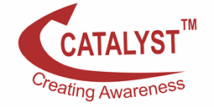In the field of PR analytics and insights, many PR professionals fail to understand the importance of the homophone pair, qualitative and quantitative data. One of the failure points of a PR program can be the ineffective use of these data or using just one data over the other. This might even result in losing the trust of clients, executives, and stakeholders.
Let’s discuss these terms and break the ice.
Qualitative data:
The qualitative analysis focuses on the “Whys”. This type of data analyzes the response of customers, which focuses more on emotions, feedbacks, ratings rather than numbers. This can be used to understand the behaviors of customers, which in turn can be used to reach customers in a better way.
The results are obtained by following a set of research methodologies which include open-ended questionnaires and surveys which demands descriptive answers, reading social media posts, interviews, etc.
Quantitative data:
Quantitative data eyes on the “What(s)” as in What percentage people have considered this product. Thus, this analysis derives mostly from numbers. The research methodologies used here include closed-ended questionnaires which have pre-structured answers that the survey takers can choose from, analytics, large scale data sets and tracking software for advertising, CRM, etc.
Mixed Method Analysis:
Qualitative and Quantitative data works best when they are analyzed together in the right manner which is appropriately called a Mixed Method Analysis. But how to use them correctly?
A qualitative analysis is an initial step as it would give us answers regarding the likings and behaviors of our target audience or measuring outcomes for any PR program. For instance, a company is about to host a promotional event and location for the event is still unknown. Surveys and polls on social media can help in determining the right location for people to access and also letting them know that such an event is happening. Then comes the quantitative analysis, where closed-ended questionnaires and advertisements can be posted on social media to know how many are interested in the event. A registration link can also be posted along with this.
At the end of the event, we need to provide feedback forms which is a qualitative data that comments about what’s good and what needs to improved. This can be of great asset to measure a PR program.
Case study:
An ice cream parlor, newly opened in the city needs to be sure on how to attract customers. Preparing a questionnaire is ideal and it should focus on expectations of customers. Here are some sample questions:
Which is the ice cream parlor that attracts the most?
What are their strategies?
What kind of flavors do customers like?
What will be the price that they are comfortable with?
What’s their favorite way to consume it?
Analyzing competitors and feedbacks from customers can give the right answers to these questions. Say, most customers like to spend only 90-110 Rs on an ice cream. This statement raises another question “What do they do for a living?” and “Why do they expect such a price?”. With these questions, it is possible to know their lifestyle or how much do they value an ice cream. This is the best way to narrow down on prices on ice creams.
Why a PR needs both?
Thus, a PR professional needs to be good at both the data to understand people better and measure a program’s success.


